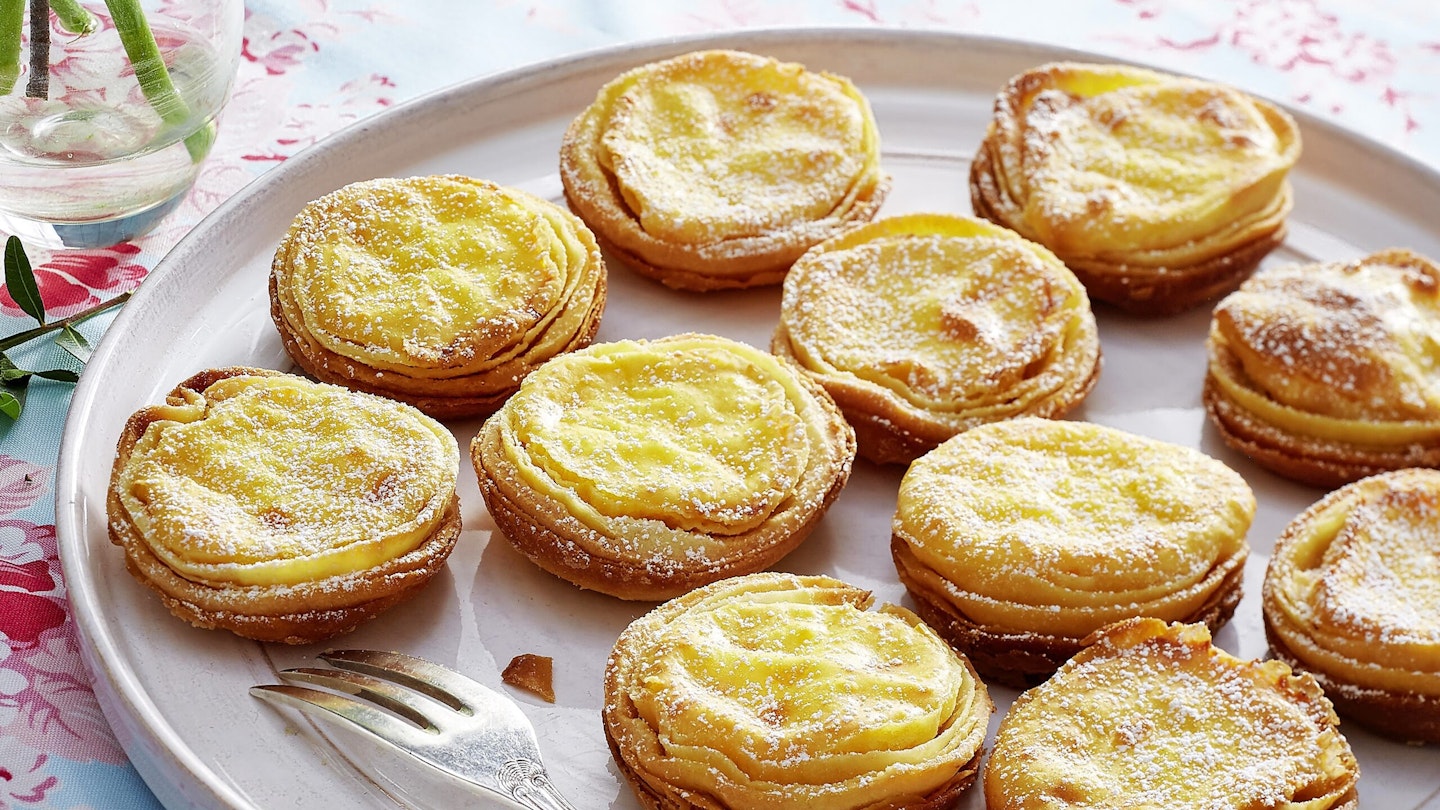Light and creamy, these dainty delicacies are thought to have originated in Tudor times and were believed to be a favourite of Henry VIII, making them an ideal royal treat for the King's coronation
What are Maids of Honour tarts?
As the country comes together to celebrate the coronation of King Charles III, streets will be festooned with ribbons, garlands and flags in patriotic red, white and blue, and thoughts turn to delectable treats to make for the celebrations. Maids of honour are a traditional English baked tart with a royal heritage, and will bring a regal feel to any coronation spread.
It is believed the King came across his second wife, Anne Boleyn, with her maids of honour, the young ladies who attended the Queen, eating the golden tarts from a silver platter. He tasted one for himself and found their melt-in-the-mouth texture so delightful that he confiscated the recipe and kept it under lock and key at Richmond Palace. An alternative account says that the maid who invented the tarts was imprisoned in the palace grounds so she could bake them solely for the Royal household.
Crisp, sweet, yet slightly savoury, with a soft, unctuous centre, their appeal endured, and by the 18th century, the recipe was disclosed to a bakery and the treats are still enjoyed today.
How to make Maids of Honour tarts
Makes 12
200g chilled unsalted butter, plus extra for greasing
200g strong flour, plus extra for dusting
100g caster sugar, plus 1 tbsp
3 eggs
80ml chilled water
900ml whole milk
45ml white wine vinegar
2 tbsp cornflour
zest of 1 lemon
sea salt
icing sugar, for dusting
baking paper
12-hole muffin tray
10cm diameter circular cutter
Place the butter between two pieces of baking paper, then beat flat with a rolling pin so it is approximately 15cm square. Place the strong flour, 1 tbsp of caster sugar and a pinch of salt in a large mixing bowl, and mix. Add 1 egg and the chilled water, and mix into a dough.
On a surface dusted with flour, roll out the dough to a 45cm rectangle, then place the butter square in the middle. Fold either side of the pastry over the butter, then turn 45 degrees so the fold is facing you. Roll the pastry into the same-sized rectangle, then fold one side two thirds in and fold the other side over. Repeat the rolling and folding process, then wrap with an airtight wrapping and leave to chill for 1 hr.
Pour the milk into a large saucepan and add a pinch of salt. Bring to the boil, then mix in the vinegar, off the heat. Leave to stand for 5 mins, then drain through a fine sieve for 10 mins. Squeeze what is now cheese curd in the sieve of any excess liquid and set aside. Discard the liquid.
Preheat the oven to 200°C/180°C fan/gas mark 6 and grease the muffin tray. Dust a surface with flour and roll the pastry to an A4 size. Cut out 12 circles, then line the muffin tray holes with the pastry. Pin prick the bottom of the cases and bake for 15 mins. Remove from the oven and turn the oven to 180°C/160°C fan/gas mark 4. The bottom of the pastry cases may need to be pushed down with the back of a teaspoon.
In a large bowl, whisk together the cheese curd, 100g of caster sugar, cornflour, lemon zest and remaining eggs until smooth. Pour 3 tsp of the mixture into each pastry case, filling almost to the top rim. Bake for 10-12 mins until the filling is firm. Allow the pastries to cool on a wire rack, then dust with icing sugar and serve.
Take out a LandScape subscription
LandScape brings the fresh air of the British countryside into your home. With a mix of beautiful photography and in-depth features, it captures the very best of every season, from stunning landscapes and places to visit to the best of British traditional cookery and crafts. Choose the right Subscription offer for you… Receive 12 issues with free UK delivery to your door with a Print Subscription. Get easy access to the digital issues, Member-only rewards and more by taking out a Digital Subscription or choose a Print + Digital Subscription and get everything included.

